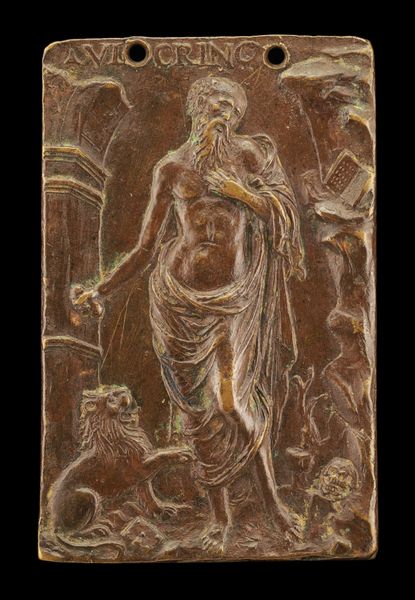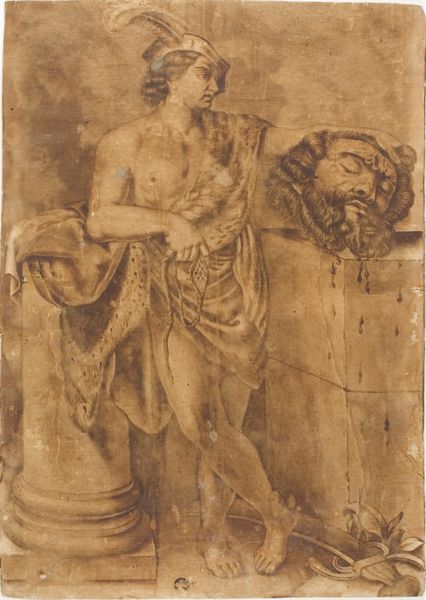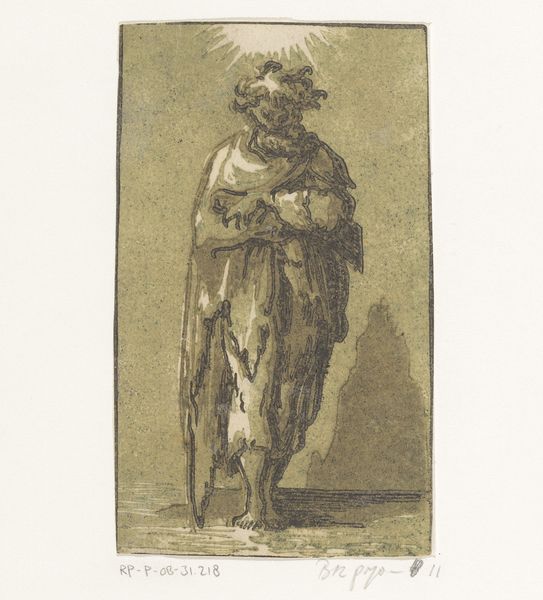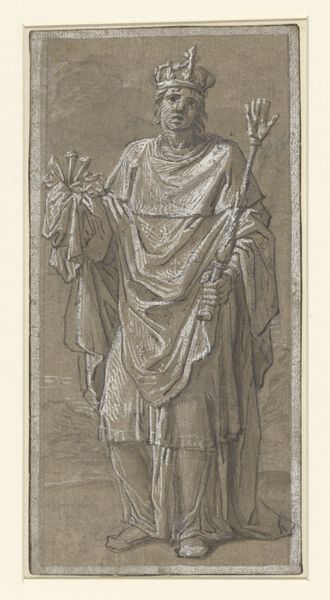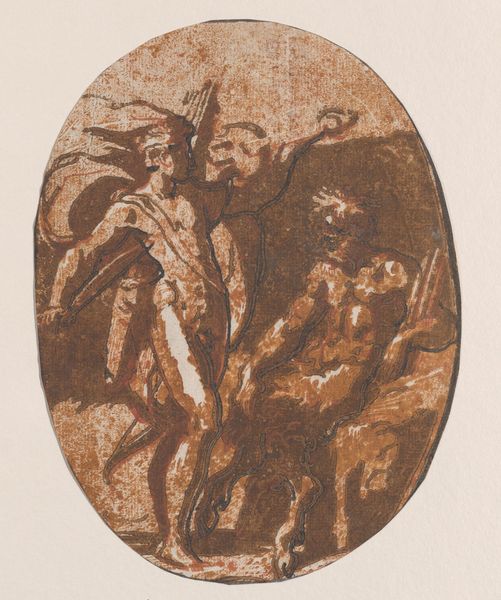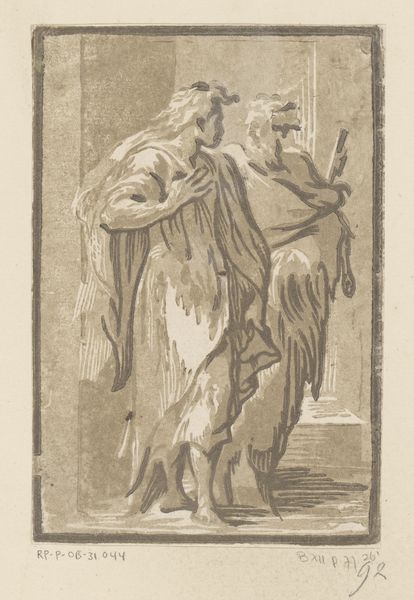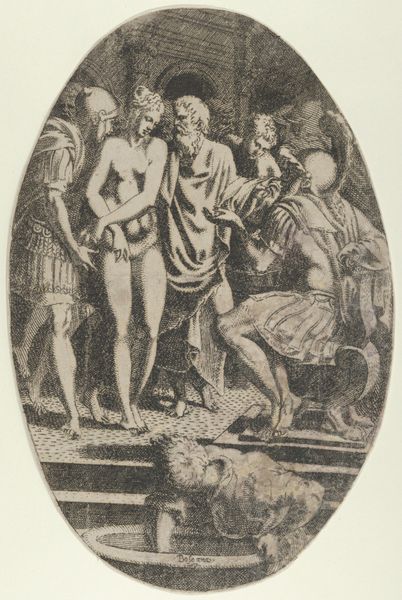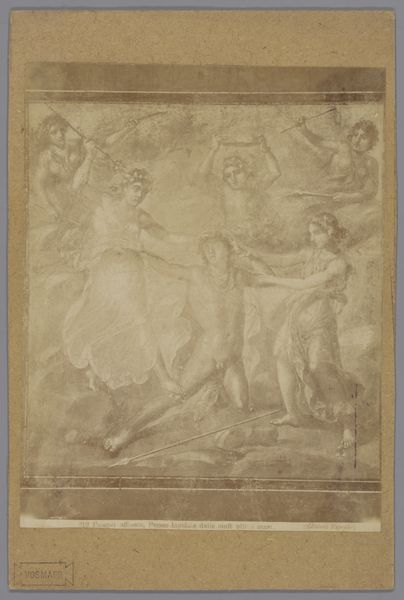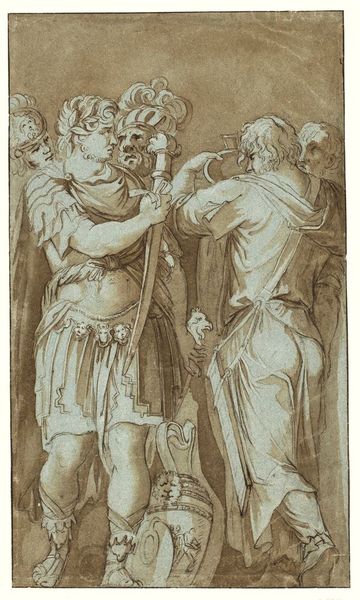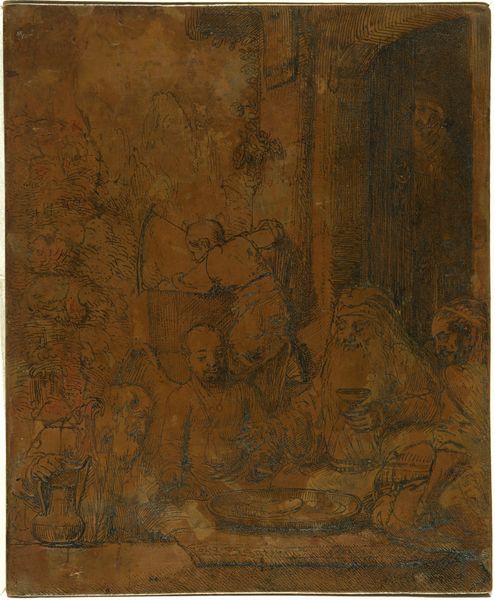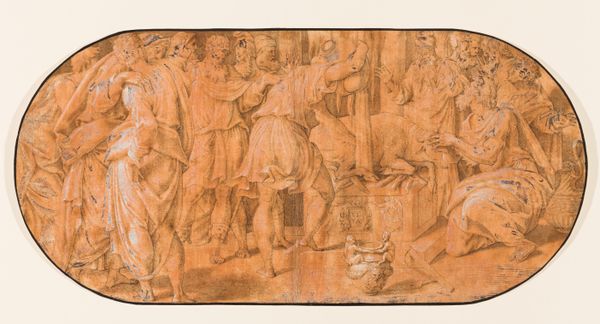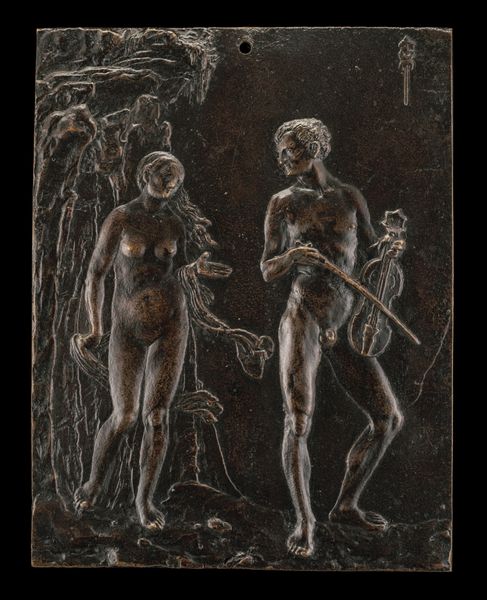
Bas Relief from the Arch of Constantine, Rome 1849
0:00
0:00
print, relief, photography, sculpture, gelatin-silver-print
#
portrait
# print
#
greek-and-roman-art
#
relief
#
charcoal drawing
#
figuration
#
photography
#
soldier
#
ancient-mediterranean
#
sculpture
#
gelatin-silver-print
#
men
#
history-painting
Dimensions: Image: 12 3/4 × 9 15/16 in. (32.4 × 25.2 cm)
Copyright: Public Domain
Editor: So, this is Frédéric Flachéron’s 1849 gelatin-silver print depicting a Bas Relief from the Arch of Constantine in Rome, currently held at the Met. The sepia tone and the photographic medium give an interesting contrast to the ancient relief itself. What strikes me is the translation of this ancient power display into a reproducible print, it feels quite modern somehow. What's your perspective on it? Curator: It is fascinating how Flachéron captured this relief. It’s crucial to think about the original context. This relief was about Roman imperial power, produced with very specific labor practices and available materials, a testament to a hierarchical society. Now, a 19th-century print? Think about its accessibility. Who could consume this image? Editor: Presumably, a wider audience than the original, perhaps fueling a certain romanticism towards classical empires? Curator: Precisely! And how does the printing process itself change the artwork's message? The material of a photograph versus the stone. One is reproducible, relatively cheap and fragile, the other is unique, monumental and durable. That changes the experience entirely, from an awe-inspiring symbol to a collectable item for the bourgeoise. Editor: I hadn’t considered the shift in access and how the medium reshapes the original intention of the Roman relief. The act of reproduction transforms it. Curator: Exactly. By making it reproducible, it entered a new circuit of consumption, no longer solely about imperial authority but also about the desires and tastes of 19th-century Europe. A new mode of production creating a different story. Editor: I see that now. It’s a powerful reminder to look at the context of both the original and the copy to understand its full significance. Thanks for highlighting the crucial interplay between the materials, methods, and social influences at play here! Curator: Indeed. Always consider how materials and process affect how we view an image and who it can reach, shifting both the artwork’s cultural and historical significance over time.
Comments
No comments
Be the first to comment and join the conversation on the ultimate creative platform.
